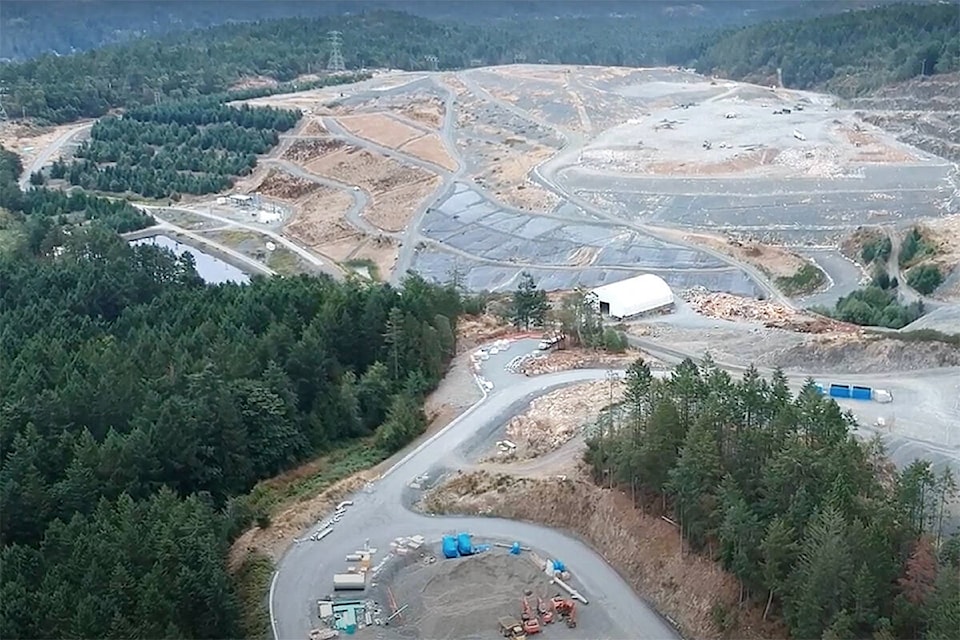An area of Hartland landfill is being exhausted by biosolids faster than expected as the Capital Regional District could have to go against its policy of not applying them to local lands.
That will be up for debate on Wednesday (June 21) when the region’s environmental services committee weighs pursuing non-agricultural land application within the CRD’s borders as a short-term solution.
B.C. is against landfilling biosolids and requires communities to have a beneficial use for the wastewater treatment end products as it says the nutrients in the dried pellets can help plants and soils, while also storing greenhouse gas emissions.
The region’s primary beneficial use strategy for the biosolids is sending them to a Richmond Lafarge cement plant where they’re used as a fuel alternative. However, that facility’s silo has been inoperable since last July and Lafarge is still having challenges procuring contractors to repair it. The monthly costs for landfilling the biosolids have also topped $100,000 above what it costs to send them to Lafarge.
The CRD amended its short-term policies earlier this year to allow using biosolids for non-agricultural purposes and identified an existing mine reclamation program near Cassidy that could use the substances. That led to the Regional District of Nanaimo expressing concerns over the plans and asking the CRD to reconsider.
“Both of our organizations benefit by using residual solids from our wastewater treatment systems in a way that also addresses the global warming implications of methane gas; the RDN program utilizes our biosolids completely in-region,” RDN chair Vanessa Craig wrote in a May 30 letter to the CRD.
“We have difficulty understanding the current approach of the CRD to prevent land application of biosolids within your region while shipping it to another region for the same use.”
The CRD said the search for immediate alternatives is becoming urgent as the current filling area at Hartland is being “exhausted at a much higher rate than anticipated.” It looked at out-of-region land application programs because there were some mature ones available, staff said, but the CRD will need to consider in-region options for applying biosolids to the land.
The region is also looking at other biosolids diversion programs used in the Lower Mainland and staff will also provide a report next month on the long-term biosolids management process. That July update will include a final technical report from consultants on a range of options and staff will give an update on the potential for using thermal technologies.
The CRD must submit its long-term biosolids plan to the province by next June.
READ: Regional District of Nanaimo monitoring capital region’s plan to ship biosolids to Cassidy



